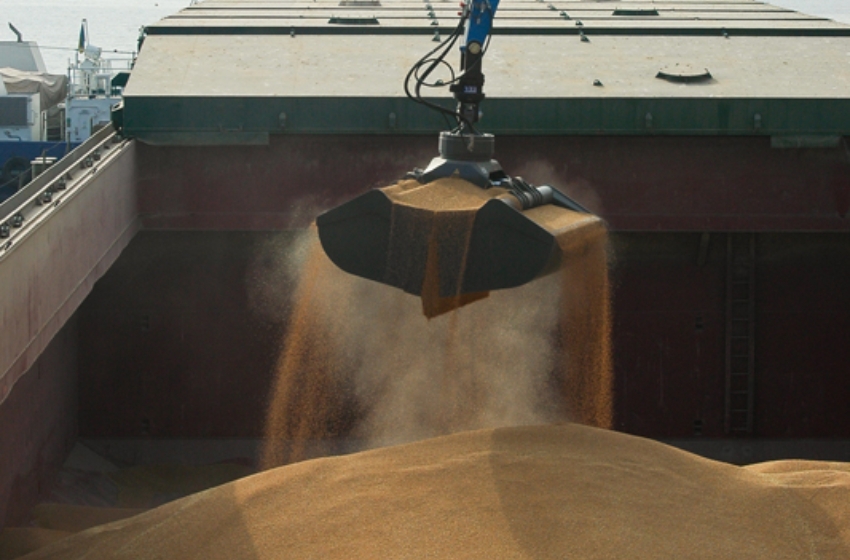Fitch Ratings, Warsaw (21 May 2021). The American credit rating agency Fitch Ratings has affirmed the City of Odessa's Long-Term Foreign- and Local-Currency Issuer Default Ratings (IDRs) at 'B'. The Outlooks are Stable.
The affirmation reflects Fitch's unchanged view that Odessa's operating performance and debt ratios will remain in line with 'B' rated peers' over the medium term, despite the economic downturn triggered by the coronavirus pandemic. The city's Standalone Credit Profile (SCP) is assessed at 'b+' and the city's ratings remain capped by the Ukrainian sovereign IDRs (B/Stable).
Odessa, in south-west Ukraine, is the third-largest city in the country, and its 1 million inhabitants comprise about 42% of the region's population, or 2.4% of the national one. Odessa is at the crossroads between central Europe and the Middle East. The city is an important administrative, industrial, educational and cultural centre. The unemployment rate (according to the International Labour Organization's methodology and available only for the Odessa region) was 7.1% at end 3Q20 (2019: 6.1%) but below the national average of 9.6% (2019: 8.6%). However, the wealth indicators of Ukraine and Odessa are weak by international comparison, with national GDP per capita well below the EU average.
KEY RATING DRIVERS
Risk Profile: 'Vulnerable'
Fitch assesses the city's Risk Profile as Vulnerable in line with other Fitch-rated Ukrainian cities. The city's risk profile combines all six factors assessed at Weaker (revenue framework, expenditure framework, debt and liquidity framework) and considers the country's IDR rated B. The assessment reflects Fitch view of a very high risk relative to international peers that the issuer's ability to cover debt service by the operating balance may weaken unexpectedly over the forecast horizon (2021-2025) either because of lower-than-expected revenue or expenditure above expectations, or because of an unanticipated rise in liabilities or debt-service requirements.
Revenue Robustness: 'Weaker'
The evolving nature of the national fiscal framework, dependence on a weak counterparty for a material portion of the city's revenue and weak revenue growth prospects drive the 'Weaker' assessment for revenue robustness. Operating revenue is mostly made up of taxes (75% of operating revenue in 2020), such as personal income tax (PIT; 47%) and local taxes, mainly property tax and single tax (23%). The negative effects of the coronavirus pandemic of growing unemployment, lower wage increases and tax exemptions, caused tax revenue growth to slow to 6% yoy in 2020 compared with average growth of 29% in 2016-2019.
Transfers from the state budget substantially declined by 45% in 2020 following amended responsibilities in the social and healthcare sectors, but still account for 19% of operating revenue (mainly educational subsidy). The transfers are sourced from the central government, which in Fitch's view impairs revenue sustainability, especially during periods of economic downturn.
Revenue Adjustability: 'Weaker'
Like all other Fitch-rated Ukrainian cities, Fitch assesses Odessa's revenue adjustability at 'Weaker' because the cities' ability to generate additional revenue in response to possible economic downturns is limited. Cities have formal tax-setting authority over several local taxes and fees that accounted for 22% of total revenue in 2020, down from 24% in 2019. However, the affordability of additional taxation in response to the economic downturn is low as it is constrained by legally set ceilings and high socio-political sensitivity to tax increases.
Expenditure Sustainability: 'Weaker'
The city's expenditure framework is fragile, leading to our 'Weaker' assessment of its sustainability. The spending dynamic during the last five years has been influenced by high inflation and reallocation of responsibilities. In 2020, the city was largely responsible for education and healthcare (34% of total spending in 2020), both of which are of a non-cyclical nature. The pandemic caused extra spending on medical equipment, tests and disinfection, which could be compensated by savings from the lockdown of schools and administration. The share of current cost for healthcare may go down in 2021, with state reform and when the pandemic ceases. Odessa made also capex cuts, which decreased by about UAH0.5 billion to UAH2.8 billion in 2020. Capexis the most flexible budget item, accounting for 26% of total expenditure.
Expenditure Adjustability: 'Weaker'
Fitch assesses the city's ability to curb spending in response to shrinking revenue as weak due to the high rigidity of operating expenditure and overall low per capita spending compared with international peers. Operating expenditure is dominated by staff costs (33% of total expenditure in 2020) and current transfers made (25%). In 2020, the share of staff costs and transfers made increased compared with previous years (from 25% and 18% in 2019, respectively). This was because of legislative changes in responsibilities, minimal wage and average salary increases and inflation as well as Covid-19. Odessa had to support its municipal companies, eg public transport companies that provided comparable transport service while passenger numbers decreased by 30%. Fitch estimates the share of inflexible expenditure is about 70%-75% of spending.
The city's investment programme (large portfolio of small investments) can offer some leeway in the short term as worsened economic conditions could force the city to re-direct part of the funds aimed at socially-oriented spending. Odessa's biggest area of investment in 2021 will be healthcare, where about UAH400 million capex (about 20% of the total) will be directed to refurbish the cities' healthcare entities and provide special oxygen generators for Covid-19 patients. Over the longer term, pressure on capex will persist as the city's infrastructure needs remain high due to significant underfinancing over a prolonged period.
Liabilities & Liquidity Robustness: 'Weaker'
Fitch assesses Odessa's liquidity and liabilities robustness at 'Weaker'. Local and regional governments operate under a weak national debt and liquidity management framework due to Ukraine's underdeveloped debt capital market and relatively short debt maturities compared with international peers. Domestic funding is characterised by short- to medium-term maturity of three to five years and high fixed interest rates, which was lowered in 2020 following cuts to the reference rate (currently 7.5% from April 2021).
Odessa has loans with local banks and a loan with the Nordic Environment Finance Corporation. Odessa's debt portfolio (2020: UAH2.5 billion) is solely in local currency and has fixed interest rates. Debt repayments are smooth (quarterly or semi-annual), reducing refinancing risk. Final debt maturity is in 2024.
Like other Fitch-rated Ukrainian cities Odessa had interest-free treasury loans contracted prior to 2014 (unchanged UAH205.4 million). As these loans were granted to the city to finance mandates delegated by the central government and will be written off by the state, Fitch does not include these treasury loans in its calculation of city's adjusted debt and treats them as contingent risk.
Odessa supports investments made through the municipal companies, taking advantage of loans from the international institutions such as European Bank for Reconstruction and Development (AAA/Negative) and World Bank. The loans, granted in euros and US dollars are guaranteed by the city. In 2020, the value of these guarantees totalled UAH918 million (up from UAH843 million at end-2019) and may rise further if the city's transportation company starts to construct the 'North-South' tram route and incurs the negotiated EUR20 million loan from European Investment Bank (AAA/Stable). Fitch has included the guaranteed debt of the city's companies into "Other Fitch-classified debt" and thus in net adjusted debt of the city as Odessa supports the repayment of debt (including FX risk) through its budget (capital injections and current grants to companies).
Liabilities & Liquidity Flexibility: 'Weaker'
Like other Ukrainian cities, Odessa's available liquidity is restricted to the city's own cash reserves (UAH294.6 million at end-2020) and the loans provided by local banks ('B' rated counterparties), which justifies a 'Weaker' assessment for the liquidity profile. There are no emergency bail-out mechanisms from the national government due to the sovereign's fragile capacity and therefore weak public finance position, which is dependent on IMF funding for the smooth repayment of its external debt.
Debt Sustainability: 'aa category'
Under Fitch's rating case scenario, the debt payback ratio (net adjusted debt-to-operating balance) will remain strong and below 2x in 2021-2025 (2020: 1.4x), which corresponds to a strong 'aaa' debt sustainability assessment. However, short maturity of the debt will lead to weaker actual debt service coverage ratio (ADSCR), which may fall to 1.9x in the rating case ('a' category) from 2.8x in 2020. The corresponding higher refinancing risk results in a final debt sustainability assessment in the 'aa' category, despite a low fiscal debt burden projected to remain below 50% of operating revenue ('aaa' category).
In our rating case, we expect net adjusted debt to increase towards UAH4.5 billion by end-2025 but remain at 32% of operating revenue as in 2020. The nominal debt increase will be driven by the city's rising direct debt following implementation of projects in infrastructure and healthcare. We assume a stable level of municipal companies' debt of UAH866 million at end-2025 compared with UAH918 million at end-2020.
We project annual capital expenditure growing to UAH3.3 billion on average in 2021-2025 (UAH2.9 billion on average in 2018-2020). Net adjusted debt growth should be slowed by the operating balance improving to UAH3.1 billion annually in the projection period on average, from UAH2.3 million in 2018-2020, which is due to the city's wealth metrics and despite prudent assumptions in tax revenue growth and operating spending increases.
DERIVATION SUMMARY
Odessa's 'b+' SCP reflects a combination of a 'Vulnerable' risk profile and a 'aa' debt sustainability assessment. The SCP also factors in national peer comparison. The city's IDRs are not affected by any other rating factors, but are constrained by the sovereign's IDRs.
| ENTITY/DEBT | RATING | PRIOR |
| Odessa, City of | LT IDR B Affirmed | B |
| Odessa, City of | LC LT B Affirmed | B |
Additional information is available on: Fitch Ratings website





















